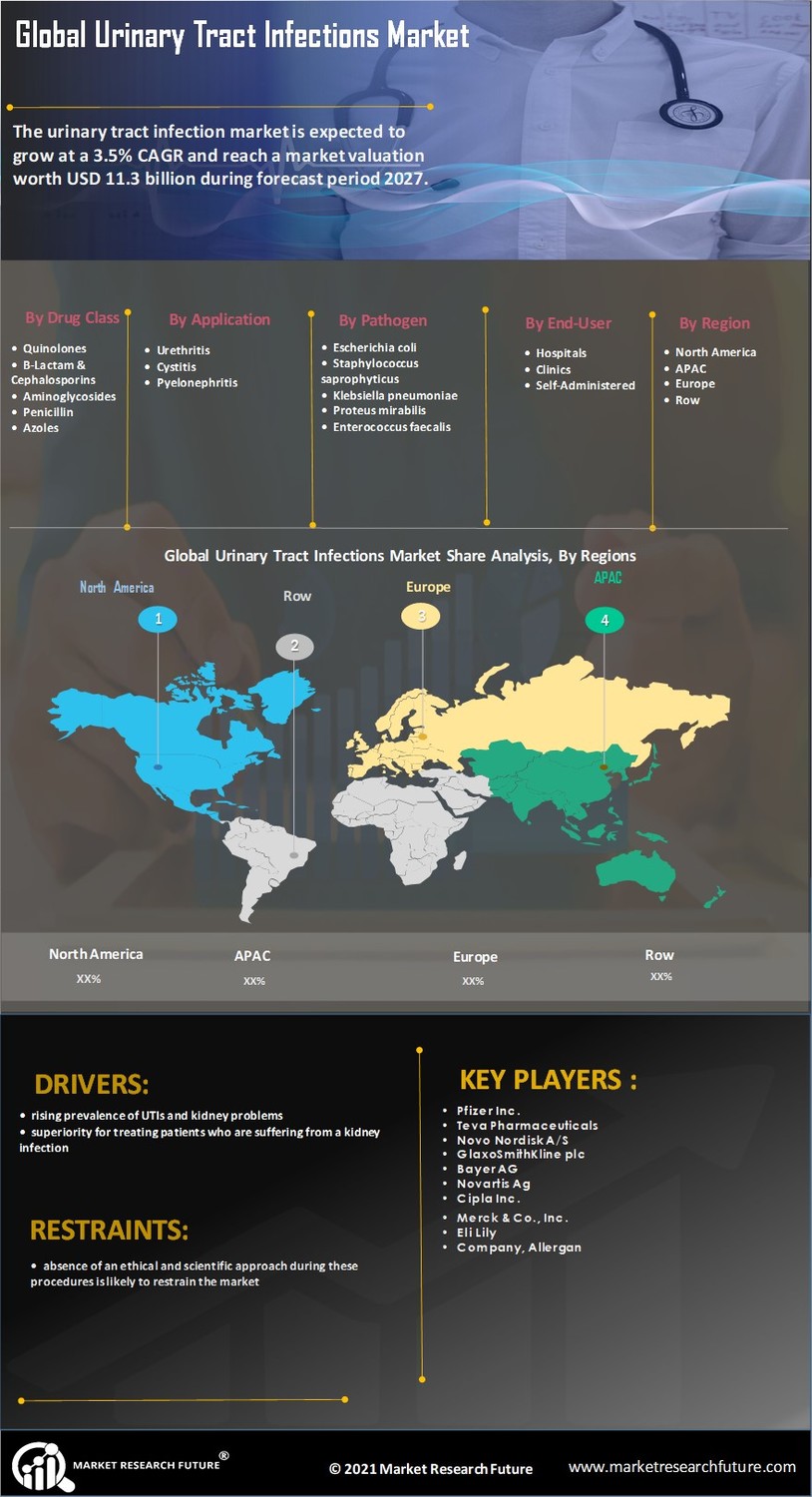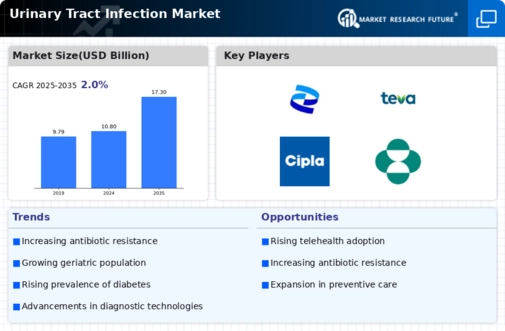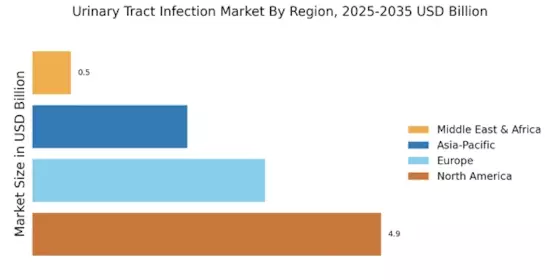Expansion of Healthcare Access
The expansion of healthcare access is playing a pivotal role in shaping the Urinary Tract Infection Market. Increased availability of healthcare services, particularly in underserved regions, is facilitating timely diagnosis and treatment of urinary tract infections. Telehealth services, in particular, are becoming more prevalent, allowing patients to consult healthcare providers remotely. This trend is especially beneficial for individuals who may face barriers to accessing traditional healthcare settings. As more patients seek medical advice and treatment for UTIs, the demand for diagnostic tools and therapeutic options within the Urinary Tract Infection Market is expected to grow, reflecting a broader commitment to improving urinary health.
Growth of the Elderly Population
The growth of the elderly population is a significant driver of the Urinary Tract Infection Market. As individuals age, they often experience physiological changes that increase their susceptibility to urinary tract infections. Conditions such as urinary incontinence, prostate enlargement, and weakened immune systems are prevalent among older adults, contributing to a higher incidence of UTIs. This demographic shift necessitates tailored healthcare solutions, including specialized treatments and preventive strategies. Consequently, the healthcare industry is likely to invest in research and development aimed at addressing the unique needs of the elderly, thereby propelling the Urinary Tract Infection Market forward.
Advancements in Treatment Options
Innovations in treatment options are significantly influencing the Urinary Tract Infection Market. The introduction of new antibiotics and alternative therapies, such as probiotics and immunotherapy, is reshaping the landscape of UTI management. Recent data suggests that antibiotic resistance is a growing concern, prompting researchers to explore novel approaches to treatment. The development of targeted therapies that minimize side effects and enhance efficacy is likely to attract attention from healthcare professionals and patients alike. Consequently, the availability of diverse treatment modalities is expected to bolster the Urinary Tract Infection Market, as it caters to the varying needs of patients and healthcare systems.
Increased Awareness and Education
The Urinary Tract Infection Market is benefiting from increased awareness and education regarding urinary health. Public health campaigns and educational initiatives are effectively informing individuals about the symptoms, risk factors, and preventive measures associated with UTIs. This heightened awareness is leading to earlier diagnosis and treatment, which is crucial in managing infections and preventing complications. Moreover, healthcare providers are emphasizing the importance of hydration, hygiene, and lifestyle modifications in reducing UTI occurrences. As more individuals become proactive about their urinary health, the demand for diagnostic and therapeutic solutions within the Urinary Tract Infection Market is likely to rise.
Rising Incidence of Urinary Tract Infections
The Urinary Tract Infection Market is experiencing growth due to the rising incidence of urinary tract infections among various demographics. Studies indicate that women are particularly susceptible, with nearly 50 to 60% experiencing at least one UTI in their lifetime. This increasing prevalence is attributed to factors such as anatomical differences, hormonal changes, and lifestyle choices. Furthermore, the aging population is also contributing to the rise in UTI cases, as older adults often face complications that predispose them to infections. As a result, healthcare providers are focusing on developing effective treatment options and preventive measures, thereby driving the demand within the Urinary Tract Infection Market.


















Leave a Comment